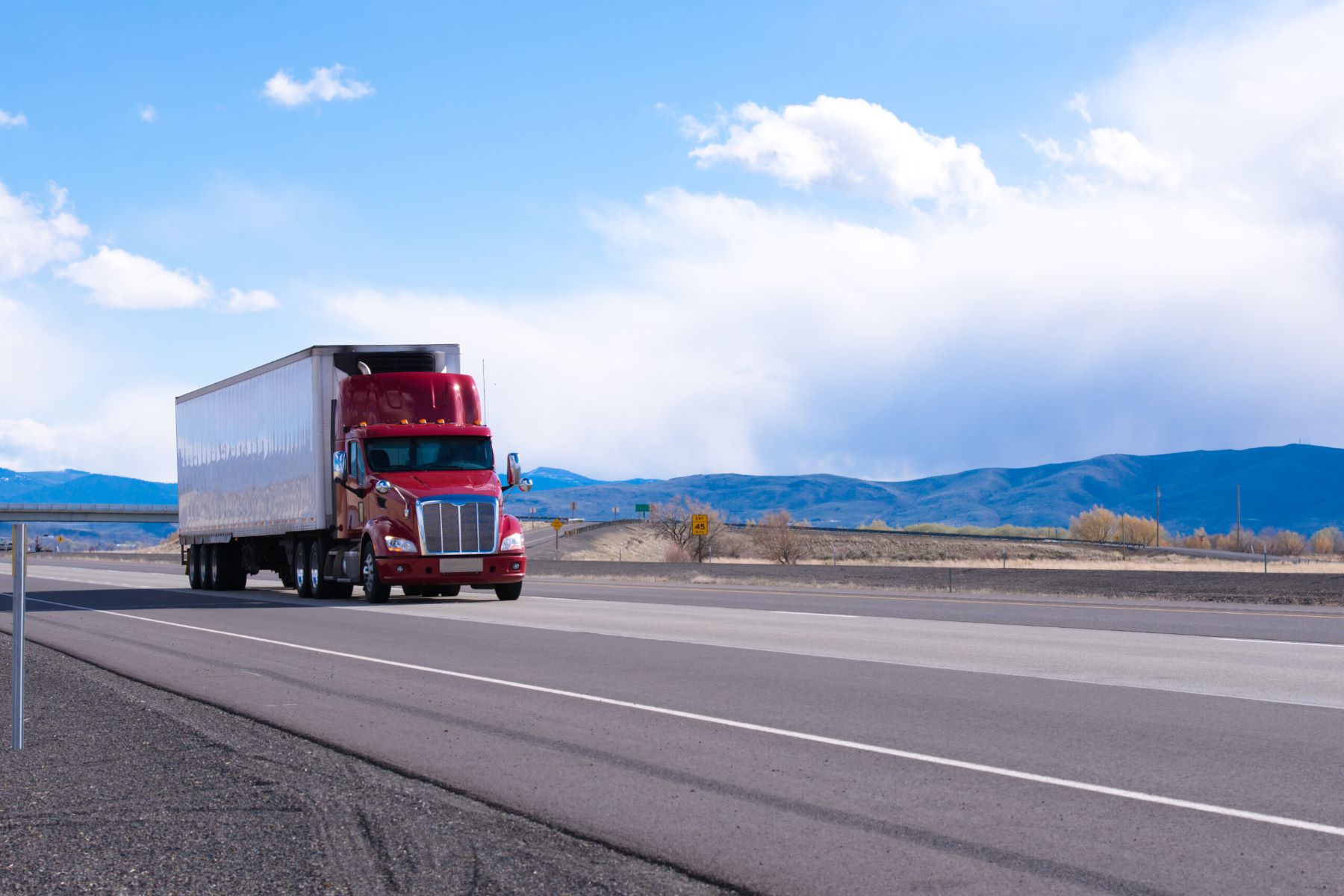Home>Automotive>The Surprising Difference Between Interstate And Intrastate CDL


Automotive
The Surprising Difference Between Interstate And Intrastate CDL
Published: February 4, 2024
Learn about the key disparities between interstate and intrastate CDL, and how they impact the automotive industry. Understand the implications for drivers and businesses.
(Many of the links in this article redirect to a specific reviewed product. Your purchase of these products through affiliate links helps to generate commission for Regretless.com, at no extra cost. Learn more)
Table of Contents
Introduction
Commercial Driver’s Licenses (CDLs) play a pivotal role in the transportation industry, serving as the gateway for individuals to pursue careers as professional truck drivers. However, not all CDLs are created equal. There are distinct differences between interstate and intrastate CDLs that have significant implications for drivers and the types of driving they are authorized to do.
Understanding these differences is crucial for anyone considering a career in commercial trucking. Whether you're a seasoned driver or a newcomer to the industry, the nuances between interstate and intrastate CDLs can impact the routes you can drive, the types of cargo you can transport, and the regulatory requirements you must adhere to.
In this comprehensive guide, we will delve into the intricate details of interstate and intrastate CDLs, shedding light on the distinct requirements, limitations, and opportunities associated with each. By the end of this article, you will have a clear understanding of the surprising differences between these two types of CDLs, empowering you to make informed decisions and navigate the complex landscape of commercial trucking with confidence.
Understanding CDLs
A Commercial Driver’s License (CDL) is a specialized credential that authorizes individuals to operate commercial vehicles. These vehicles, which include tractor-trailers, buses, and trucks, are essential for transporting goods and passengers across the country. The issuance of CDLs is governed by state and federal regulations, with stringent requirements in place to ensure the safety of drivers, passengers, and other road users.
CDLs are categorized into different classes, each corresponding to the type of vehicle and cargo that a driver is permitted to operate. The three primary classes of CDLs are A, B, and C, with Class A being the most comprehensive and allowing drivers to operate the widest range of vehicles.
To obtain a CDL, individuals must undergo rigorous training and testing to demonstrate their proficiency in handling commercial vehicles. This process typically involves both written examinations and practical driving tests, ensuring that drivers possess the knowledge and skills necessary to navigate the complexities of commercial trucking.
Moreover, CDL applicants are required to meet specific criteria related to their driving record, medical fitness, and criminal history. These stringent standards are designed to uphold safety standards and mitigate the risks associated with operating large, heavy-duty vehicles on public roads.
In addition to the general CDL requirements, individuals seeking to obtain a CDL may also need to pursue additional endorsements or restrictions based on the nature of their intended commercial driving activities. Endorsements, such as the tanker endorsement or hazmat endorsement, authorize drivers to transport specialized cargo, while restrictions may limit the types of vehicles or conditions under which a driver can operate.
Overall, the process of obtaining and maintaining a CDL is multifaceted, encompassing a broad spectrum of knowledge, skills, and regulatory compliance. By understanding the intricacies of CDLs, aspiring commercial drivers can position themselves for success in the dynamic and rewarding field of commercial trucking.
Interstate CDL Requirements
To qualify for an interstate CDL, aspiring commercial drivers must meet specific requirements that enable them to engage in interstate commerce, which involves transporting goods and passengers across state lines. The process of obtaining an interstate CDL entails adherence to stringent regulations and comprehensive evaluations to ensure that drivers are equipped to navigate the complexities of interstate transportation.
One of the fundamental prerequisites for obtaining an interstate CDL is the acquisition of a commercial learner's permit (CLP). This preliminary credential allows individuals to undergo training and practice driving commercial vehicles under the supervision of a qualified instructor. The CLP serves as a crucial stepping stone toward obtaining the full interstate CDL, providing aspiring drivers with the opportunity to hone their skills and familiarize themselves with the nuances of operating commercial vehicles in interstate commerce.
In addition to the CLP, individuals pursuing an interstate CDL must demonstrate their knowledge and proficiency through written examinations that cover a wide range of topics, including vehicle operation, safety regulations, and cargo transportation. These assessments are designed to assess candidates' understanding of critical concepts and their ability to apply regulatory standards in real-world driving scenarios.
Furthermore, interstate CDL applicants are required to undergo a comprehensive skills assessment, which typically involves a practical driving test conducted by certified examiners. During this evaluation, drivers must showcase their ability to maneuver commercial vehicles, adhere to traffic laws, and execute safe driving practices, all while demonstrating a deep understanding of the responsibilities associated with interstate transportation.
Moreover, individuals seeking an interstate CDL must meet stringent medical requirements to ensure that they are physically and mentally fit to operate commercial vehicles across state lines. This often involves undergoing a thorough medical examination conducted by a qualified healthcare professional who can assess the driver's overall health and fitness for duty.
Overall, the process of obtaining an interstate CDL is rigorous and multifaceted, requiring aspiring commercial drivers to demonstrate a comprehensive understanding of commercial vehicle operation, safety protocols, and regulatory compliance. By meeting these stringent requirements, individuals can position themselves for rewarding careers in interstate commerce, contributing to the efficient movement of goods and passengers across the vast expanse of the nation's highways.
Intrastate CDL Requirements
Obtaining an intrastate Commercial Driver’s License (CDL) involves meeting specific criteria that enable individuals to engage in commercial driving activities within the boundaries of a single state. While the process shares similarities with obtaining an interstate CDL, there are distinct requirements tailored to intrastate operations that aspiring commercial drivers must fulfill.
One of the primary prerequisites for obtaining an intrastate CDL is the acquisition of a commercial learner's permit (CLP). Similar to the process for interstate CDLs, the CLP serves as an initial credential that allows individuals to undergo training and practice driving commercial vehicles under the guidance of a qualified instructor. This pivotal phase provides aspiring drivers with the opportunity to familiarize themselves with the unique considerations and regulations governing intrastate transportation.
In addition to the CLP, individuals pursuing an intrastate CDL must demonstrate their knowledge and proficiency through written examinations that encompass essential topics such as vehicle operation, state-specific regulations, and the safe transportation of cargo within the confines of a single state. These assessments are designed to evaluate candidates' understanding of critical concepts and their ability to apply state-specific regulatory standards in practical driving scenarios.
Furthermore, intrastate CDL applicants are required to undergo a comprehensive skills assessment, typically in the form of a practical driving test conducted by certified examiners. During this evaluation, drivers must demonstrate their ability to maneuver commercial vehicles, adhere to state traffic laws, and exhibit safe driving practices tailored to intrastate operations. This ensures that drivers are well-prepared to navigate the unique challenges and regulations associated with driving within a single state.
Moreover, individuals seeking an intrastate CDL must meet specific medical requirements to ensure that they are physically and mentally fit to operate commercial vehicles exclusively within the boundaries of a single state. This often involves undergoing a thorough medical examination conducted by a qualified healthcare professional who can assess the driver's overall health and fitness for duty, as mandated by state-specific regulations.
Overall, the process of obtaining an intrastate CDL is comprehensive and tailored to the nuances of intrastate commercial driving. By meeting these specific requirements, individuals can position themselves for fulfilling careers within their home state, contributing to the efficient movement of goods and passengers within the local and regional economy.
Key Differences Between Interstate and Intrastate CDLs
The distinctions between interstate and intrastate CDLs are pivotal, shaping the scope of commercial driving activities and the regulatory requirements that drivers must adhere to. Understanding these differences is essential for aspiring commercial drivers and industry professionals alike, as they have far-reaching implications for the types of routes, cargo, and driving scenarios that drivers are authorized to engage in. Let's delve into the key disparities between interstate and intrastate CDLs to gain a comprehensive understanding of their unique attributes.
Geographic Boundaries
One of the fundamental disparities between interstate and intrastate CDLs lies in the geographic scope of driving authorization. Interstate CDLs empower drivers to operate commercial vehicles across state lines, facilitating the transportation of goods and passengers on a national scale. In contrast, intrastate CDLs restrict drivers to conducting commercial driving activities solely within the boundaries of a single state, limiting the scope of their operations to local and regional routes.
Regulatory Oversight
Interstate and intrastate CDLs are subject to distinct regulatory frameworks, reflecting the varying complexities and considerations associated with interstate and intrastate commerce. Interstate CDLs are governed by federal regulations established by the Department of Transportation (DOT) and the Federal Motor Carrier Safety Administration (FMCSA), encompassing comprehensive standards for vehicle operation, driver qualifications, and safety protocols. Conversely, intrastate CDLs are regulated at the state level, with each state implementing its own set of rules and guidelines tailored to the specific nuances of intrastate transportation.
Driving Limitations
The driving limitations associated with interstate and intrastate CDLs are inherently tied to the geographic boundaries and regulatory oversight governing each type of license. Drivers holding interstate CDLs are authorized to engage in long-haul transportation, traversing vast distances and navigating diverse terrains across multiple states. In contrast, drivers with intrastate CDLs are confined to shorter, localized routes within a single state, typically focusing on regional transportation and local delivery operations.
Endorsements and Restrictions
The endorsements and restrictions applicable to interstate and intrastate CDLs are tailored to the unique demands of interstate and intrastate driving activities. Interstate CDLs may require specific endorsements, such as the interstate commerce endorsement, to validate a driver's authorization for interstate transportation. Conversely, intrastate CDLs may entail endorsements or restrictions related to state-specific regulations and the transportation of specialized cargo within the confines of a single state.
Implications for Commercial Drivers
The disparities between interstate and intrastate CDLs have profound implications for commercial drivers, shaping the scope of their career opportunities and the regulatory compliance requirements they must uphold. Aspiring drivers must carefully consider these differences when determining their career paths and the types of driving activities they aspire to engage in, ensuring alignment with the specific attributes of interstate or intrastate commercial driving.
In essence, the key disparities between interstate and intrastate CDLs encompass geographic boundaries, regulatory oversight, driving limitations, and endorsements, collectively shaping the landscape of commercial trucking and the diverse opportunities available to drivers operating in interstate and intrastate contexts. By understanding these distinctions, aspiring and seasoned commercial drivers can navigate the complexities of the industry with clarity and informed decision-making, positioning themselves for success in their chosen realm of commercial transportation.
Conclusion
In conclusion, the realm of commercial trucking encompasses a diverse tapestry of driving activities, each governed by distinct regulatory frameworks and geographic boundaries. The surprising differences between interstate and intrastate CDLs underscore the multifaceted nature of commercial driving, presenting aspiring drivers with a spectrum of opportunities and considerations as they embark on their careers.
The distinction between interstate and intrastate CDLs extends beyond mere geographical boundaries, permeating the regulatory oversight, driving limitations, and endorsements associated with each type of license. Interstate CDLs open the gateway to national-scale transportation, enabling drivers to traverse state lines and engage in long-haul operations that span the breadth of the country. In contrast, intrastate CDLs confine drivers to localized routes within a single state, fostering regional transportation and local delivery operations that cater to the unique demands of intrastate commerce.
Moreover, the regulatory frameworks governing interstate and intrastate CDLs reflect the varying complexities and considerations associated with interstate and intrastate commerce. Interstate CDLs are subject to federal regulations established by the Department of Transportation and the Federal Motor Carrier Safety Administration, encompassing comprehensive standards for vehicle operation, driver qualifications, and safety protocols on a national scale. Conversely, intrastate CDLs are regulated at the state level, with each state implementing its own set of rules and guidelines tailored to the specific nuances of intrastate transportation.
For aspiring commercial drivers, understanding the surprising differences between interstate and intrastate CDLs is paramount, as it empowers them to make informed decisions about their career paths and the types of driving activities they aspire to engage in. Whether embarking on the expansive highways of interstate commerce or navigating the intricate networks of intrastate transportation, drivers must align their aspirations with the specific attributes and regulatory compliance requirements of interstate or intrastate commercial driving.
In essence, the distinctions between interstate and intrastate CDLs underscore the dynamic and nuanced landscape of commercial trucking, offering a myriad of opportunities for drivers to contribute to the efficient movement of goods and passengers across local, regional, and national domains. By embracing these differences and navigating the complexities of interstate and intrastate commerce with clarity and insight, commercial drivers can embark on fulfilling careers that align with their aspirations and the diverse facets of commercial transportation.













